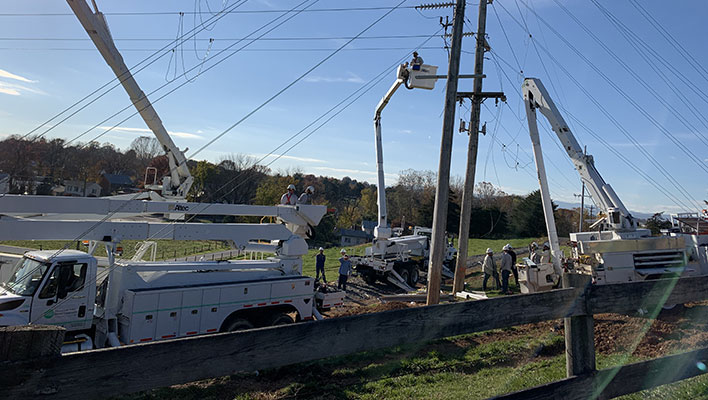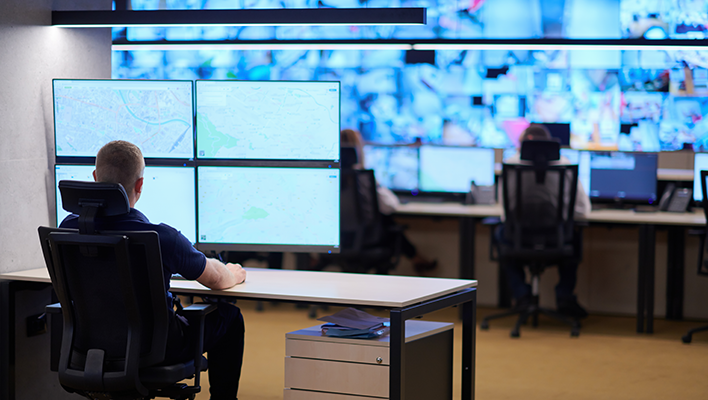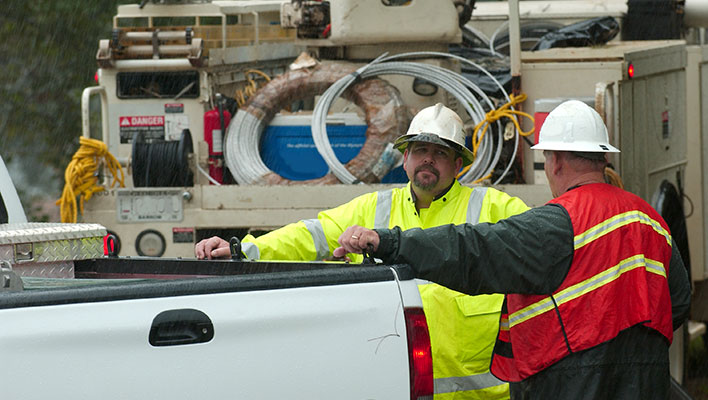As electric utility leaders think about the strategies needed to navigate the workforce mobility challenges of today and tomorrow, multiple business priorities are top of mind, including a big crew change that leaves teams understaffed and reliant on contractors, increasing storm events, and an urgent need to enhance situational awareness. Jason Rhoades, Customer Success Manager at ARCOS, brings his voice of authority to our blog where his 23 years of experience on the front lines of the electric industry make him uniquely qualified to provide pragmatic insights, from adoption of new technology and unleashing crew performance to managing a hybrid workforce and meeting even the darkest sky work head on with the digital utility of the future.
It’s a mistake to think that utilities are slow to adopt new technology. Truth be told, we’re all for anything that helps us get the lights back on faster. But just because technology is new doesn’t mean it helps do that. Replacing paper-based processes with a fancy new device that requires 20 extra steps is a non-starter. Line crews will seek the path of least resistance even if that means paper and handwritten reports. Needless to say, end-user adoption is critical.
When I started my career 23 years ago the industry was completely paper based. The digital transformation of the electric utility industry has occurred gradually over the decades, and we are still heavily dependent on paper, like lugging around work packets and binders full of standard operating procedures that ride shotgun in trucks. But people really power the grid as I argued in my last blog post. Technological advancements, when they have occurred over the years, require the buy-in of the people who have to use it. New digital technology often means that crews have to rely on a drastically different way of doing things in situations where time is of the essence and safety is on the line. in this post, I’d like to share my perspective of the digital transformation I’ve seen firsthand as a lineman and distribution manager and where I think we’re headed as an industry.
Radio communication between the field and back office signaled the first wave of electronic innovation in our industry, albeit analog but radio-connected computers that could send small packets of digital data did eventually appear in trucks. By the time I got my first job as a line worker, there were a few PCs in the back office. But the field was 100% paper. The tools we used to track jobs were hand done, the same craftwork as my grandfather used in 1930. We were still using the same techniques, only the equipment we carried was different.
Hard to imagine a time now when everyone didn’t carry around a smart phone wherever they went. We were really seeing the early days of cellular phone adoption but if the boss wanted to get a hold of you, you needed to wait by the phone at home (a clunky device by today’s standards directly attached to the wall with a land line). That’s how we did callouts and from the lineman’s perspective I guess we didn’t fully appreciate the hours spent in the back office putting rosters together, complying with union rules, and making all those phone calls.
I remember when the field started using laptop computers, initially just for simple administrative tasks and time keeping. Oh, how the old linemen wanted to have nothing to do with that. But with any innovation in the field, it is often met with resistance until it is better understood, and crews start seeing that it gets the lights back on faster or improves their life/work balance. A year later, those crusty old linemen would have been lost without their laptops, proving you can teach old dogs new tricks.
Working for Allegheny Power in Virginia, now FirstEnergy, we were one of the first electric utilities to get ARCOS Callout. Automating what was normally hours of tedious work for the back office with Callout was truly revolutionizing workforce mobility management for the time. Though we had to use pagers and then callback to the callout line for job details. It moved the workforce mobility ball down the field, but if you were cutting the lawn and didn’t hear the pager beep, you missed the callout.
Going digital for the electric utility industry was always incremental, go digital in one area and still rely on paper in other areas. We went to digital maps and standards halfway through my career, but maps and situational awareness always lagged because of the delay of still having paperwork-orders to close.
Smart phones have been an incredible game changer for our industry although many utilities haven’t fully realized this yet. For starters, utilities don’t have to buy any additional equipment since every lineman brings their own device to work (BYOD). Using GPS, you know where you are at every moment and can navigate to jobs with a tap. Or receive work orders digitally, or add damage assessments directly to a GIS app. All of the right ingredients are just sitting there in every lineman’s pocket or tablet device. But the problem is information sprawl, disconnected apps that work great to solve a specific task but make users hop in and out of apps without any overarching workforce management strategy.
It is really strange to watch crews walk around with a powerful mobile device while still having to rely on paper and tedious manual processes that erode wrench time. Yet because I’ve seen such a big wave of innovation gradually sweep over our industry in my 23 years in the business, I know that the digital utility of the future is going to be even safer, more efficient, and yes, completely paperless.
The next wave of innovation is one where we eliminate all of the distractions that keep linemen from focusing much more of their day on blue and dark sky work. You do that by giving field staff, native and non-native crews a single pane of glass through which to view everything that matters to them. You do it by bringing all of the work types currently managed in different systems – maintenance, inspections, outages, storm response, etc. – together. You do it by giving crews features designed by linemen for linemen, such as entering notes with voice-to-text so they can keep gloves on and avoid fat fingering a critical detail. And you do all of this in ONE app with a real time interactive GIS map to manage people, assets, and work.
When I was in charge of the Columbus district for American Electric Power, I got to see how this digital utility of the future is being built. You don’t check all of the boxes for what linemen need by armchair quarterbacking a solution from thousands of miles away from the circuits you need to manage. Like ARCOS did for AEP, you put your software developers right in the truck to ride with crews to listen and learn about their most urgent challenges. That’s how you get it right and make sure that end-users will embrace new technology. This approach doesn’t just improve situational awareness and safety or save the utility company money from all of the new operational efficiencies. It improves the quality of life and job satisfaction of field workers. Participating in digital transformation from the front lines also improves the line department’s culture because they feel they are part of the solution.
Adoption of new digital workforce management solutions is only going to accelerate with the big crew shift happening now as the older generation retires and is replaced with tech savvy younger workers, which is the topic of my next blog.
Are you enjoying my blog series on building the digital utility of the future? Connect with me – I’d love to talk or answer any questions.
Did you enjoy Jason’s blog? Check out his previous post: Building the Digital Utility of the Future: People Power the Grid




